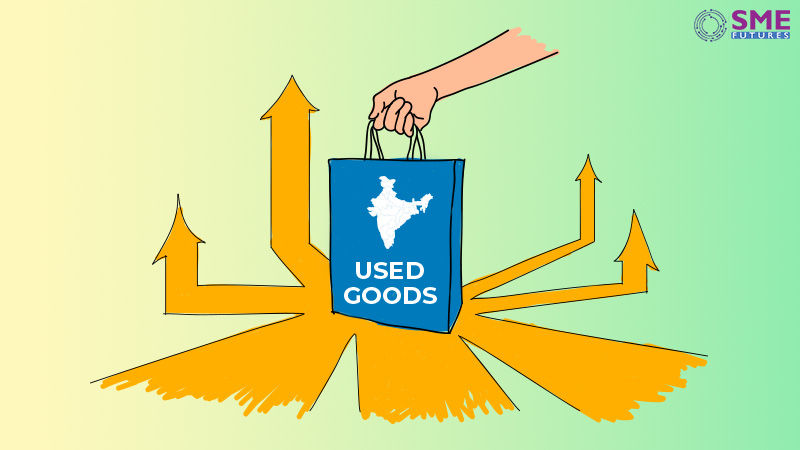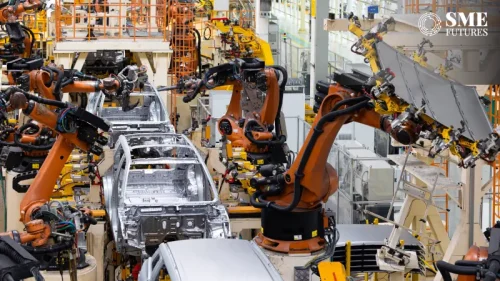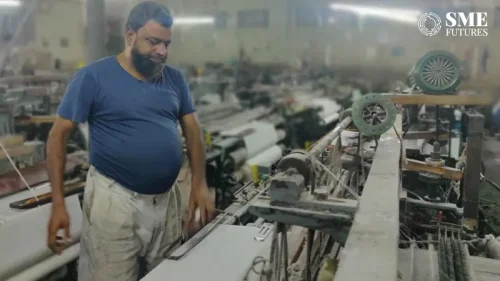Gone are the days when used or old things were tossed out as garbage or chipped in for new utensils. Today, be it used electronics, cars, books or clothes, almost everything is available on online platforms. This trend of buying refurbished, pre-owned, classified or used goods has in fact evolved into a full-fledged business vertical over the past few years. Although it is still niche with only a few platforms such as OLX and Quikr having become popular in the space, it has certainly gained more popularity, especially among millennials.
For instance, when a software engineer by profession, Himanshu Tanwar moved cities for job, he sought out for used furniture from an online platform. He writes on social media, “Moving to a new place made me look for reused furniture. I ordered furniture from a popular used goods site, which was delivered within the said delivery date. Most importantly, it was cheaper than ordering new ones and within the budget.”
Brown Money Matters
‘Brown Money’ is a term coined by OLX, which simply refers to the cash generated from re-selling used or idle stuff. The used-goods industry generally consists of electronics, clothing, footwear and accessories, furniture, appliances and home furnishings, entertainment, recreation and cultural products, antiques and collectables; and others.
While the concept always existed, it wasn’t available online traditionally. Markets such as Delhi’s Jama Masjid, Dariya Ganj; Kolkata’s College street market, Park Street’s auction houses or Lucknow’s Nakhaas market and many more, have been famous for selling second-hand objects, way before internet entered our lives. However, with the rise of e-commerce and internet, people started seeing more value in earning brown money out of their old goods, making the market more C2C oriented.
“Pre-owned goods allow users to get a product of their choice at an incredible bargain, vis-a-vis the new-goods market. As more people end up buying goods online, inevitably they will end up on pre-owned marketplaces as well. This is because consumers have realised they can derive more value out of the same by selling it online,” says OLX India Spokesperson. In 2015, the used-goods market was valued at ₹ 115,000 crores by ASSOCHAM. As per industry data, the quality-tested, pre-owned products market in India is expected to reach US$ 12 to US$ 15 billion in 2020, clearly showing the country’s appetite for pre-owned goods.
Today, a larger section of the society is leaning towards pre-owned products. The trend is more significant among millennials, who represent nearly 34 per cent of the Indian population. E-commerce has also made it easier for people and businesses to transact on websites for buying and selling stuff, making India the second-largest online market, only behind China.
According to industry data, there are more than 430 million internet users in India, and the number is expected to increase to about 635.8 million by 2021. More than 90 per cent Indian consumers with an internet access, engage in some or the other online activity while shopping in-store, which includes exploring products online, comparing prices, reading reviews, comparing similar products, posting reviews post purchase and so on.
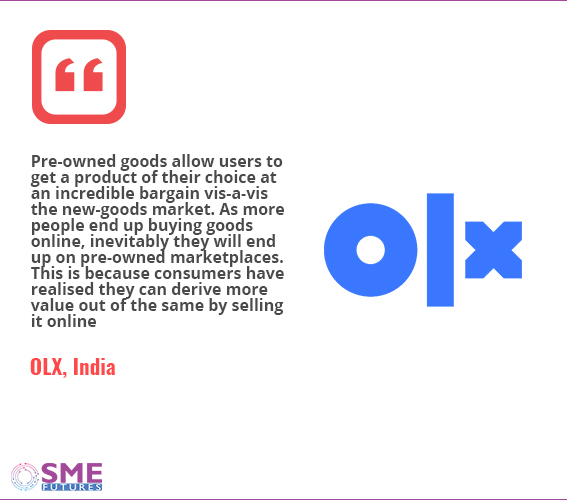
Compelling Lifestyle Shifts
People have become more prone to selling used goods, noticeably over the recent years – reason being the desire to upgrade. The second being boredom of using one, especially in case of mobile phones. According to a 2016 study by OLX and market research firm IMRB, on an average, every Indian household stocks 12 clothing items, 14 kitchen utensils, 11 books, 7 kitchen appliances, 2 mobile phones and 3 watches.
The OLX spokesperson also agrees that internet penetration is one of the key factors making these kinds of platforms popular. He says, “Our research indicates that while most of the first-time internet users access the internet for entertainment and communication needs, they gradually move on to online marketplaces like OLX over a due course of time. On OLX, most of these first-time internet users start by transacting low ticket items such as mobile phones and then gradually move on to higher ticket items such as automobiles or white goods.” He shares that people browse the app for market understanding in the beginning and eventually convert into buyers and sellers on the platform.
Another reason for the growth of used-goods platforms is the growing awareness amongst low-income households in Tier II and III cities. They are a major market for industry operators because, despite their growing need for lifestyle products, they have limited income to spend on discretionary goods. Consequently, a rise in the number of such households results into an increase in the demand for used goods.
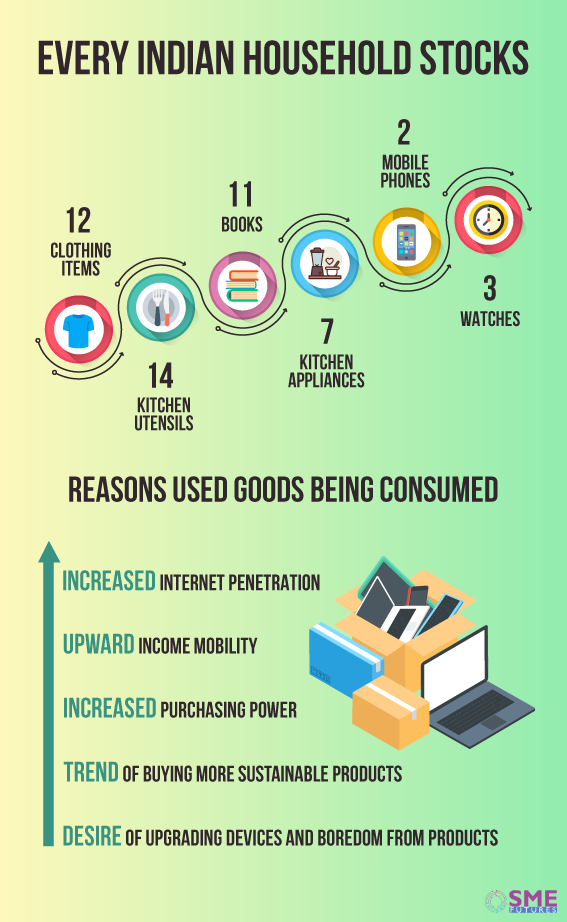
Players in the Market
As a matter of fact, the pre-owned goods economy runs parallel to the new goods economy. With diminishing life span of the value of products and consumers’ tendency to replace goods ever so frequently, the sentiment for pre-owned goods remains extremely positive. This is why, the second-hand goods market has grown tremendously over the past few years in India.
Currently, OLX and Quikr are the two leading online classifieds portals except that they are not involved in any monetary transactions,unlike other e-commerce giants such as Flipkart or Amazon, where consumers can post an advertisement to sell or can buy pre-owned, refurbished or used goods.
“OLX is a household name in India for buying or selling anything online largely due to our iconic brand campaigns in the past. Taking this a step further, we have recently refreshed our brand identity with the tagline –‘SET HAI’. The new brand resonates with the transformation that we are undergoing for our customers and for the business. It appeals to the millennials in India, who are the early adopters of newer technologies,” informs the OLX official. Currently, OLX commands over 85 per cent market share in the online classifieds market in India.
India being the top growth market for such platforms strategically, most are focused on winning the maximum share. To achieve the same, companies in this space are coming up with competitive strategies to capture as much of the market. In this process, both OLX and Quikr have recently diversified their product portfolio by acquiring Aasaanjobs, a job platform and Zefo, a marketplace for used furniture, respectively.
As part of a company event, Quikr’s founder and chief executive officer, Pranay Chulet talks about acquisition of Zefo, as he says, “The acquisition of Zefo is in line with the phenomenal consumer acceptance of the assured products and services on our platform. Generally, a pre-owned product’s price can be as low as 30 to 60 per cent of a new one. Now, with Quikr and Zefo as a combined entity, we will be able to offer a broader selection of products at even more competitive prices along with a strong focus on quality.”
Earlier last year, Quikr had strengthened its position in the real estate sector by acquiring India Property Online Private Limited, a full-stack real estate platform based out of Chennai.
The company claims that, ‘Quikr Assured’ products business has grown 230 per cent year-on-year in FY2018-19. Besides, considering the increasing opportunities in the used-goods sector, Quikr has opened a series of five offline stores, called Quikr Bazaar, across cities. By the end of this year, the company plans to have 25 such stores across India to provide additional channels and increased accessibility for its consumers.
Whereas, OLX in January this year, acquired Aasaanjobs, a recruitment marketplace for blue and grey-collared jobs, in order to strengthen its position in the online jobs search segment. “The aim is to disrupt the ever-growing job market with the acquisition of this portal and to unify our position in the job classifieds market in India,” informs the official from OLX.
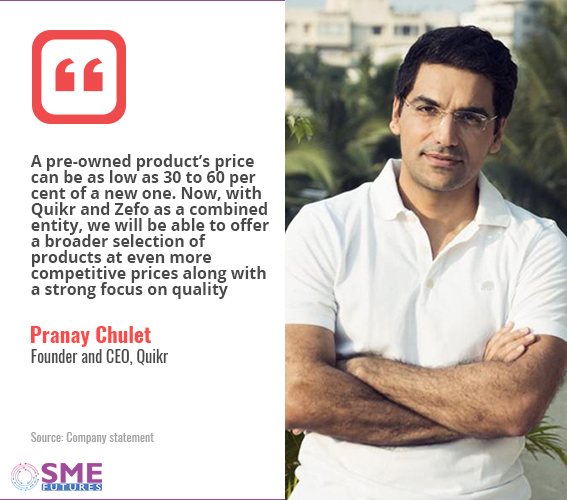
According to company research, more than 70 million blue/grey-collared job opportunities are available each year, in urban centres alone, while the pertaining workforce stands at 60 million workers annually, signaling a significant scope for growth opportunity in the sector. “Since the market for blue and grey-collared jobs is relatively unorganised, it gives us a unique opportunity to penetrate in entry-level jobs sector with a strong technology offered by Aasaanjobs, wherein most of the online players are not yet able to solve the problem,” says the OLX India spokesperson.
Seeing positive sentiments, Flipkart too, entered the space last year. The online marketplace called 2Gud.com, that sells refurbished goods (not used goods) is getting great response from users who seek latest devices and technology at reasonable rates. Even e-commerce giant Amazon, earlier in 2017, had rolled out its ‘Sell as Individual’ service to tap the second-hand market, which allows users to post used goods for sale on the online platform.
Smaller Fish in the Pond
While browsing the internet, searching for platforms other than the big names in the used goods trade; we stumbled upon Gurgaon based AllIndiaBazaar.in. It is a small business struggling to fit in the used goods domain with a slightly different concept. In a conversation with us, its founder Shan D. Shenker says, “AllIndiaBazaar.in existed even before OLX and Quikr became big names. It is just that we were not so active in the domain as we have other businesses as well. But now we are continuously focusing on the platform for past one and half years to make it more stable.”
Active since 2009, the platform allows individuals and companies to sell and buy new and old items online, but one can only post upto five items with pictures for free. Unlike Quikr and OLX, this platform doesn’t allow any transactions, rather users are diverted to payment gateways.
The difference between other platforms and AllIndiaBazaar.in is that it allows both B2C and C2C transactions. “We want it to be a mix of classifieds and e-commerce platform and be in somewhere middle,” Shan informs. He further explains that his platform works on a subscription-based model, which is cheaper than Netflix (₹ 699 for six months and ₹ 399 for three months) and sellers can avail a long list of sales related features, which are not available for the free users.
“On the security front, we have worked hard and technically over the last one and a half year, AllIndiaBazaar.in is almost at par with the big guys and can handle the same kind of traffic they get,” Shan asserts.
“There’s a hitch,” he says, when asked about why small business such as AllIndiaBazaar.in could not attract customers despite having cool features. He tells us that they have been trying to get investors, but because the platform is unknown to many, the company hasn’t been able to find proper credit roll. “The biggest challenge we are facing is lack of investments due to which we are not able to reach our audience via marketing. It’s a two-way process and we are focused on fulfilling our market strategies through some funds,” Shan opines.
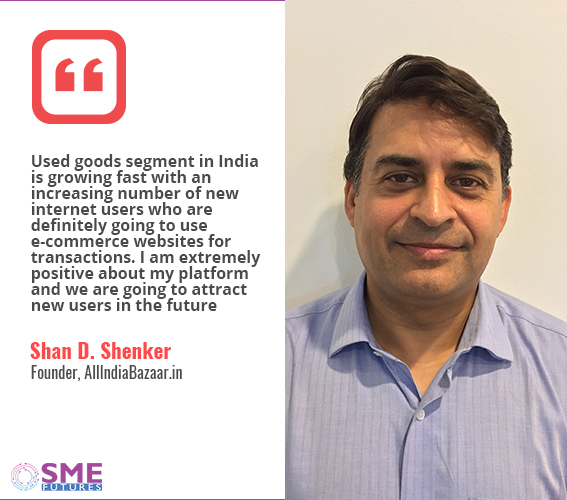
Despite the challenges, Shan is positive about the growth in the sector. He says, “Used goods segment in India is growing fast with an increasing number of new internet users who are definitely going to use e-commerce websites for transactions. I am extremely positive about my platform and we are going to attract new users in the future.”
More Challenges for Businesses
While credit funding is one of the major challenges for small businesses, the used-goods sector has a few other challenges of its own.
First, all such platforms have to deal with old products with little or no warranties, whose condition may not be well defined and buyers have to figure out the reliability of the product on their own. At times even if the users may risk a poor experience, the platforms cannot give sellers or buyers any guarantee of the time period of selling, or of the authenticity of the products. Although, online platforms have made efforts to solve this issue, it still remains a concern among many.
Another challenge is e-fraud. For the last two years, there has been a spike in e-wallet cheating, sales fraud and scams; and even platforms such as OLX and Quikr have been involved. Fraudsters keep coming up with new tricks, using online wallets to cheat people, usually by posing as customers or buyers via the classifieds transaction platforms. For instance, there have been several cases of conmen luring people to buy second-hand cars through OLX and Quikr. Such complaints have been more common in the metro cities.
Keeping in mind this grave issue, it is necessary that these platforms provide users with tight transaction security. In this context, the platforms should use robust technology filters and site auditors to ensure conmen do not intrude into the platforms. Also, transaction sites need to alert people about the inevitable cyber threats and to educate users on how to transact safely on the platforms.
Several media reports have also recently highlighted a number of such cases where OLX users were targeted. OLX spokesperson talks about this, “We have taken a host of steps to combat this problem. Our ongoing consumer safety initiative aims to raise awareness among users to be safe while transacting online and educate internet users about cyber-safety.”
Under this initiative, OLX will promote online safety in various ways, including product updates, user safety guidelines and a digital campaign on social media. Taking this initiative offline, OLX has partnered with Cyber Peace Foundation, a leading think-tank and NGO, to conduct cyber-safety awareness workshops across the states of Rajasthan and Karnataka in the first phase. The company has also upgraded its mobile app and has added a slew of new features that ensure the safety of users, including Artificial Intelligence (AI)-backed security tips and other capabilities such as better reporting of spam and offensive content.
Shan of AllIndiaBazaar.in also shares that they have taken strict measures to prevent frauds, as online safety is a big concern. “We reject items which we find fraudulent and meant to trick users. The latest step taken by AllIndiaBazaar.in, is to give the site’s users the possibility to sign up and log in using the SafeWebKey technology to make it more secure,” he says. The SafeWebKey technology is used by Banks, Financial institutions, E-commerce sites and government institutions for secure dealings.
A Way Forward
A report by the World Economic Forum in collaboration with Bain & Company suggests that by 2030, India’s domestic consumption, which powers 60 per cent of the gross domestic product (GDP), will increase to a US$ 6 trillion opportunity. In addition to this, consumption growth will be supported by a 1.4 billion strong population, which is younger than that of any other major economy in the world. Household savings have historically been high, as thrifty and cautious Indian families put away more than a fifth of their incomes for a rainy day. Additionally, as consumerism is shifting, second hand goods are taking up a fair share in the overall buying behaviour.
The used-goods sector has outperformed the overall retail market over the last five years, benefitting primarily transaction and online classifieds platforms. Seeing the growth pattern, the second-hand goods market is likely to continue to grow through both trade liberalisation and the development of information technology. India is a significant market with all the right environmental as well as social and economic implications.
That said, although there is a tendency to think of the second-hand goods markets as a cluster of small-scale, local, rummage sale-style activities, a number of second-hand markets are, in fact, large-scale economic powerhouses. As the second-hand goods market continues to grow, it is set to increasingly compete with the producers of new goods.

